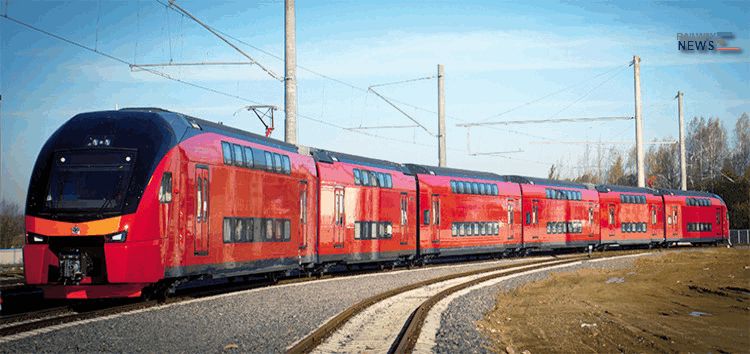Stadler Wins Commuter Train order in Moscow

Stadler Rail has won the tender by Russian rail operator Aeroexpress for the delivery of 24 double-decker multiple-unit trains. These trains will be used on the commuter railway lines running between the centre of Moscow and the three airports. The order is worth a total of around EUR 350 million and will be processed partly at the new Stadler factory in Minsk and partly in Switzerland. The Minsk factory is currently under construction and will start service in autumn 2013. The order also includes an option for 13 more trains.
Aeroexpress is ordering 16 four-carriage and 8 six-carriage double-decker multiple-unit trains from Stadler, which are to be delivered by the end of 2016. Peter Spuhler, owner and CEO of Stadler Rail Group, is pleased about the order: “This second order from Russia is an important milestone for us. After winning a first order from Russian rail vehicle manufacturer Transmash Holding a year and a half ago, this order represents a breakthrough in the Russian market for Stadler.”
Impressive dimensions
The new trains will be based on the established Stadler KISS. However, the sheer size of the Russian models makes them different from the KISS vehicles produced to date. The track gauge is 1,520 millimetres (compared to 1,435 millimetres in Western Europe). While the trains in Western Europe are normally 2,800 millimetres wide, the new double-deckers are 3,400 millimetres wide. With a height of 5,240 millimetres (compared to 4,500 millimetres in the West), the vehicles are considerably larger all round.
The trains are designed to cope with the specific Russian climate, which can range from –50 degrees Celsius to +40 degrees Celsius and in this respect are based on the FLIRT vehicles delivered to Finland, Norway, Estonia and Belarus. The trains will have a speed of 160 km/h and have comfortable, bright interiors in two classes (business and economy). The carriages are made from lightweight aluminium, which makes the vehicles much lighter than the traditional steel carriages. The reduced weight means that the train operator can make significant energy savings on everyday services.
Source & Photo : Stadler Rail PC


